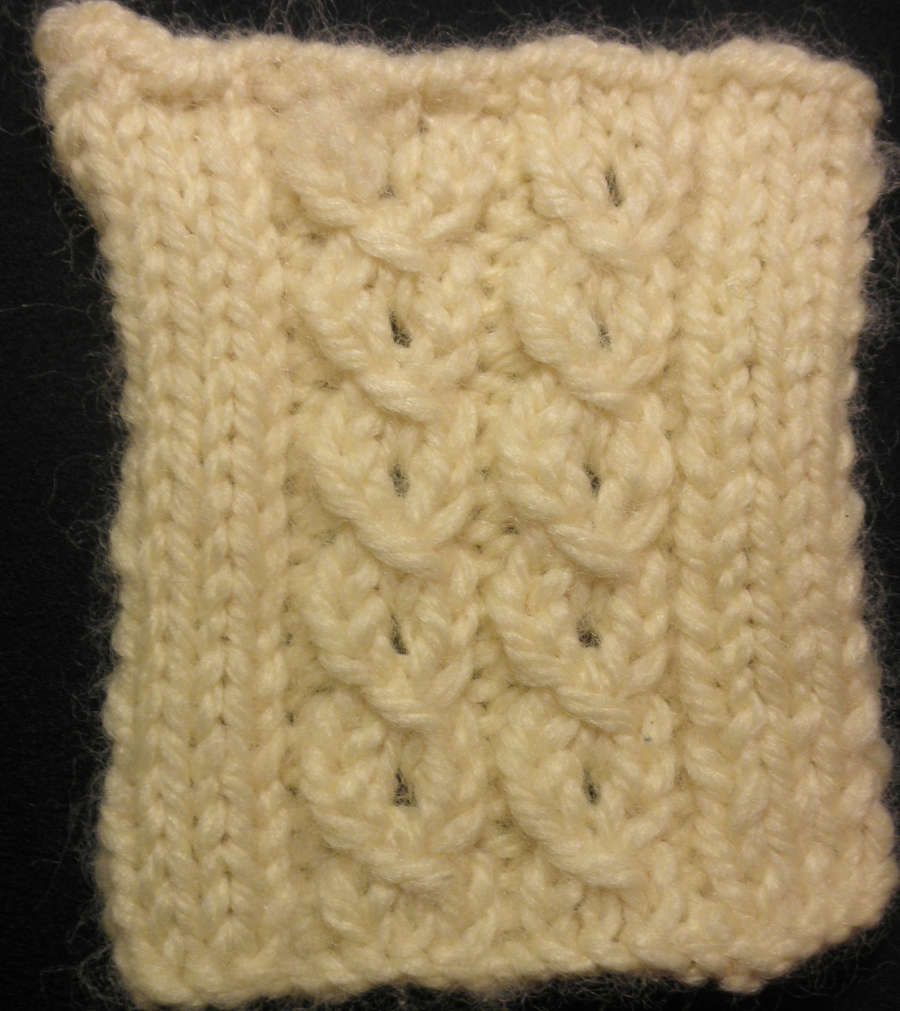A mock cable is a way of creating a stitch pattern that appears to be a traditional
 A mock cable is a way of creating a stitch pattern that appears to be a traditional cable pattern. Actually this stitch is a result of passing a slip stitch over one or more knitted stitches. An increase maintains the width of the fabric and adds to the decorative effect. This is a great way to learn how to read a pattern.
A mock cable is a way of creating a stitch pattern that appears to be a traditional cable pattern. Actually this stitch is a result of passing a slip stitch over one or more knitted stitches. An increase maintains the width of the fabric and adds to the decorative effect. This is a great way to learn how to read a pattern.Mock Cable Pattern: Sample shown is worked over 12 stitches
IMPORTANT: Because of the decrease in Row 1 (pass the sl st over the 2 K sts) the stitch count at the end of the row will only be 10. On Row 2, the increase (YO) will return the stitch count to 12 stitches at the end of that row.
Cast on 20 stitches.
Row 1:(Right side)k4 (P2, sl 1 K, K2, pass the sl st over the 2 K sts, P2) twice, k4.
Row 2: P4, K2, (P1, YO, P1, K2) twice, P4.
Row 3: K4 P2 (K3, P2) twice, K4.
Row 4: P4, K2, (P3, K2) twice, P4.
Repeat Rows 1-4 a total of 5 times.
In Row 1, the first thing the pattern tells you is that this row is the right side (public side) of the fabric. So in this pattern, all the odd numbered rows will be right side rows. Doing the cross at the very beginning keeps the cast on edge from splaying outward.
Your next instruction of Row 1 is to just Knit 4 stitches. These first four and last four stitches are the right and left borders of the swatch.
The next item of Row 1 is a group of stitches in parentheses. The items in the parentheses are treated as a unit. The word twice that follows the parentheses indicates that you need to knit that sequence twice - (sl 1 K, K2, pass the sl st over the 2 K sts, P2) (sl 1 K, K2, pass the sl st over the 2 K sts, P2). Then finish with the knit 4 for the left border.
In Rows 2, 3, and 4, each group of items in parenthesis are repeated twice.
For our sample, the last instruction is to Repeat Rows 1-4 a total of 5 times. These 20 rows will result in a sample that should look like the picture shown.
Mock Cable Pattern
Cast on 20 stitches.
Row 1:(Right side) K4, P2, (sl 1 K, K2, pass the sl st over the 2 K sts, P2) twice, K4.
Row 2: P4, K2, (P1, YO, P1, K2) twice, P4.
Row 3: K4, P2 (K3, P2) twice, K4.
Row 4: P4, K2, (P3, K2) twice, P4.
Repeat Rows 1-4 a total of 5 times.

